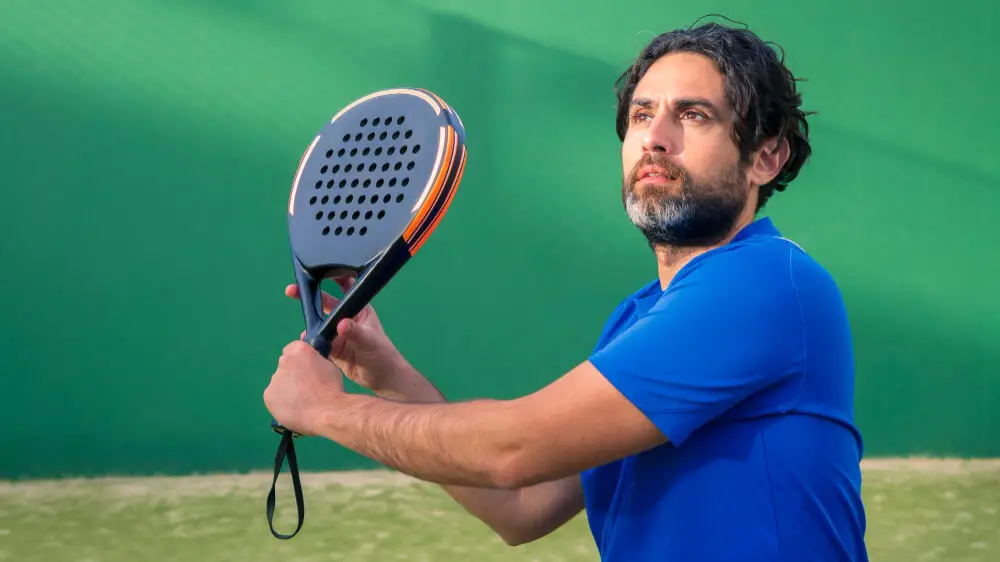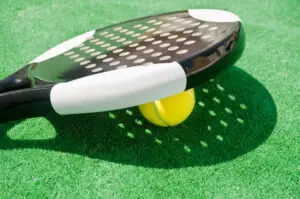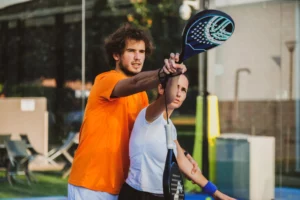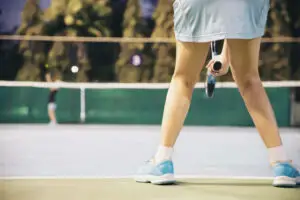The enthralling world of padel has captured the attention of sports enthusiasts around the globe, ushering in a new era of popularity for this dynamic racquet sport.
You can find here more information about Padel Sport.
A relatively young sport compared to its counterparts, padel has rapidly gained momentum and global recognition. This article delves into the compelling phenomenon of Padel’s popularity, offering insights into its ascent from a niche activity to a worldwide sensation.
By understanding the factors that fuel this rising trend, we can appreciate the impact and potential of padel within the realm of sports and recreation.
Table of Contents
Padel Popularity: A Rising Phenomenon
Unveiling the Rapid Growth of Padel Across the Globe
In recent years, the resounding crescendo of padel’s popularity has echoed across continents, transcending borders and captivating padel players of all ages and skill levels.
Originating in Mexico in the late 1960s, padel swiftly migrated to Spain, where it found fertile ground to flourish and evolve. Since then, its appeal has transcended its origins, spreading across Europe, the Americas, and beyond, igniting a fervor that has united a diverse global community of enthusiasts.
Padel's Popularity by Country
| Country | Padel’s Popularity Status |
|---|---|
| Spain | Stronghold of padel with widespread popularity. Padel is deeply ingrained in the culture, boasting numerous courts and a passionate player base. |
| Argentina | Thriving padel community with professional leagues, tournaments, and a strong presence in Latin America. |
| Mexico | Significant popularity, where padel originated. The sport’s growth continues to contribute to its regional appeal. |
| Brazil | Gradually gaining traction with the rise of padel clubs, tournaments, and a growing player community. |
| Portugal | Increasing popularity, with clubs, facilities, and competitive events attracting players of all skill levels. |
| Italy | Emerging padel scene, with an increasing number of enthusiasts embracing the sport and its social aspect. |
| Sweden | Notable growth in recent years, spurred by padel’s appeal to various age groups and its adaptability. |
| United Kingdom | Gaining momentum, driven by dedicated clubs, tournaments, and initiatives to introduce padel to new players. |
| France | Slowly building a presence, with an evolving player base and efforts to establish padel as a mainstream sport. |
| United States | Experiencing a steady increase in popularity, particularly in states like Florida, California, and Texas. |
| Canada | Padel’s popularity is growing in regions like Ontario and Quebec, marked by the establishment of clubs and leagues. |
| Australia | Padel’s introduction has gained traction, sparking interest and growth in the country’s sports scene. |
More About Padel Tennis
Factors Contributing to the Sport's Surge in Popularity
- Accessibility and Ease of Learning: Padel’s accessibility sets it apart as a sport that novices and seasoned players alike can enjoy. Unlike some other racquet sports, the learning curve for padel is comparatively gentle, allowing newcomers to grasp the fundamentals and engage in thrilling matches quickly. This accessibility has fostered a welcoming atmosphere that encourages individuals of all backgrounds to participate.
Social and Inclusive Nature: Padel’s intrinsic sociability has played a pivotal role in its burgeoning popularity. Its predominantly doubles format promotes teamwork, communication, and camaraderie, making it an ideal platform for social interactions.
The sport’s inclusive nature bridges age gaps and skill disparities, creating an environment where players of varying abilities can enjoy competitive matches together.Unique Blend of Skills from Other Racquet Sports: Padel’s allure lies in its fusion of familiar elements from tennis, squash, and other racquet sports.
The strategic padel positioning, swift reactions, and net play reminiscent of tennis combine with the close-court dynamics akin to squash, resulting in a captivating blend that appeals to enthusiasts of both genres. This amalgamation of skills presents players with a fresh challenge that invigorates their passion for racquet-based competition.
As Padel continues its ascent to prominence, these pivotal factors underline its undeniable allure and contribute to the flourishing tapestry of Padel’s popularity worldwide.

Padel vs. Other Sports: The Popularity Perspective
Padel vs. Pickleball: A Comparison of Popularity Trends
In the realm of racquet sports, the emergence of padel’s popularity has drawn intriguing parallels and distinctions with other similar sports, one notable example being pickleball.
Both Padel and Pickleball share a social and inclusive ambiance that resonates with players seeking accessible yet competitive pastimes.
Padel, with its dynamic gameplay and swift lateral movements, has captured the attention of those looking for a racquet sport that offers a unique blend of strategy and athleticism. In contrast, pickleball’s rising popularity rests on its adaptable court size and emphasis on hand-eye coordination. While both sports share certain attributes, padel’s distinctive characteristics, such as its incorporation of walls and heightened net play, set it apart as a more intricate and immersive experience that has contributed to its soaring popularity.
As padel vs. pickleball continues to unfold, enthusiasts of both sports are witnessing the evolution of two engaging pastimes that embody the spirit of friendly competition, skillful play, and a shared love for racquet sports.
Padel vs. Pickleball
| Aspect | Padel | Pickleball |
|---|---|---|
| Origins | Originated in Mexico in the 1960s, with major growth in Spain and Latin America. | Emerged in the United States in the 1960s, gaining traction across North America. |
| Court and Equipment | Played on enclosed courts with walls and glass panels. Uses solid paddles and a pressurized ball. | Played on smaller courts, often adapted from tennis courts. Uses paddles and a perforated ball. |
| Gameplay | Features dynamic rallies, fast-paced action, and strategic use of walls. | Emphasizes quick hand-eye coordination and precise shots. |
| Inclusivity | Gains popularity for its social and inclusive nature, appealing to a wide range of players. | Attracts players of different ages and skill levels due to its approachable format. |
| International Presence | Growing internationally, with strongholds in Spain and Latin America, and expanding into Europe and Asia. | Spreading beyond North America, gaining attention in Europe and other continents. |
| Competitive Landscape | Developing professional leagues and tournaments garnering attention from both amateurs and pros. | Seeing increased competitive opportunities with local and national tournaments. |
| Skill Requirements | Incorporates a blend of skills from tennis and squash, demanding a range of tactics and athleticism. | Requires agility, finesse, and accuracy in shots due to the smaller court size. |
| Social Impact | Establishing a strong community with clubs, events, and social play fosters connections. | Cultivating a sense of community through recreational play and club engagement. |
Padel Tennis: The Dynamic Growth of Padel Within the Tennis Community
Padel’s growing popularity has also made significant inroads into the traditional tennis community. Tennis players, enticed by the spirited rallies and cooperative gameplay of padel, have found themselves captivated by its allure.
Padel offers tennis enthusiasts an avenue to explore racquet sports from a new angle, with a unique set of challenges that complement their existing skills. The shorter court dimensions, rebounding walls, and engaging net exchanges have made Padel a sought-after crossover for those entrenched in the world of tennis.
This dynamic synergy between the two sports not only enriches players’ experiences but also contributes to Padel’s surging popularity by extending its reach to a broader demographic of racquet sports aficionados.
As Padel popularity continues to surge, these comparisons and collaborations with other sports illustrate its distinct identity and its remarkable ability to resonate with diverse communities of athletes, fostering a global movement that celebrates camaraderie, strategy, and the sheer joy of competitive play.
Global Phenomenon: Padel's Popularity by Country
Exploring Padel’s Stronghold in Spain and Latin America
Padel’s meteoric rise to global prominence finds its roots firmly anchored in Spain and Latin America. In these regions, padel’s popularity has transcended mere sport to become a cultural phenomenon.
Spain, the birthplace of a modern padel, boasts a remarkable saturation of courts and a dedicated community of players that reflects the sport’s vibrant spirit.
Similarly, countries across Latin America have embraced padel with fervor, integrating it into their social fabric and fostering a strong sense of camaraderie among players. The sport’s accessibility, combined with its sociable nature, has woven padel into the daily lives of people in these regions, igniting a passion that radiates outward.
Emerging Popularity in Europe, Asia, and North America
While Spain and Latin America have been the bedrock of padel’s popularity, the sport’s influence has extended far beyond these origins. In Europe, countries like Portugal, Italy, and Sweden are witnessing an upsurge in padel’s popularity, with enthusiasts drawn to its dynamic gameplay and inclusive atmosphere.
Asia and North America have also caught padel fever as the sport continues to make inroads into new territories. As padel courts become more prevalent and word of its engaging nature spreads, players in these regions are discovering the joy of a sport that bridges cultures and backgrounds.
Factors Influencing Variations in Popularity Across Different Regions
Padel’s popularity varies across regions due to a combination of factors. Cultural preferences, existing sports landscapes, and economic considerations all contribute to the extent to which padel captures the collective imagination. In some regions, the sport’s social aspect aligns seamlessly with local lifestyles, driving its popularity. In others, the infrastructure and facilities available play a pivotal role in introducing Padel to new audiences. As the sport continues to evolve and expand, these regional nuances shape the trajectory of padel’s popularity, weaving a diverse tapestry that reflects the unique preferences and contexts of different parts of the world.
As Padel’s global popularity continues to evolve, its journey across various continents underscores its remarkable ability to transcend boundaries, foster community, and kindle the competitive spirit of players across the world.
This is WHY Padel Is So EXTREMELY Popular
Future Projections: Sustaining and Expanding Padel's Popularity
Strategies for Nurturing and Growing the Sport’s Fan Base
As Padel’s popularity continues to soar, strategic initiatives are being formulated to nurture and expand its enthusiastic fan base. Collaborative efforts between sports organizations, governing bodies, and local communities are being harnessed to raise awareness about the sport’s unique attributes.
Exhibitions, clinics, and tournaments are being organized to showcase the excitement of Padel to both existing and potential players. By fostering a sense of inclusivity, enthusiasm, and shared passion, these strategies aim to solidify Padel’s place as a staple in the global sports landscape.
Encouraging Youth Engagement and Grassroots Development
A crucial component of sustaining Padel’s popularity lies in engaging the youth and cultivating future generations of players. Grassroots development programs are being established to introduce young individuals to the sport at an early age, instilling a love for padel that can last a lifetime.
Schools, clubs, and recreational centers are becoming the breeding grounds for new talent, offering a supportive environment where children can experience the joys of teamwork, competition, and sportsmanship through padel for kids
This concerted effort not only ensures the continuity of Padel’s popularity but also enriches the lives of young participants.
Leveraging Technology and Innovations to Enhance the Playing Experience
The digital era presents unprecedented opportunities to amplify Padel’s reach and elevate the playing experience.
The integration of technology, such as online platforms and mobile applications, can connect players, share insights, and facilitate match arrangements. Innovations in equipment, court design, and gameplay mechanics also contribute to a heightened sense of engagement and excitement.
By embracing technological advancements, padel can offer novel ways for enthusiasts to immerse themselves in the sport, encouraging further interaction and broadening its global appeal.
As Padel popularity continues its ascendancy, these forward-looking strategies are poised to sustain its momentum and elevate it to even greater heights. By nurturing the passion of current players, fostering the next generation’s love for the sport, and harnessing the power of technology, padel is poised to remain a dynamic and cherished aspect of the sporting landscape for years to come.







